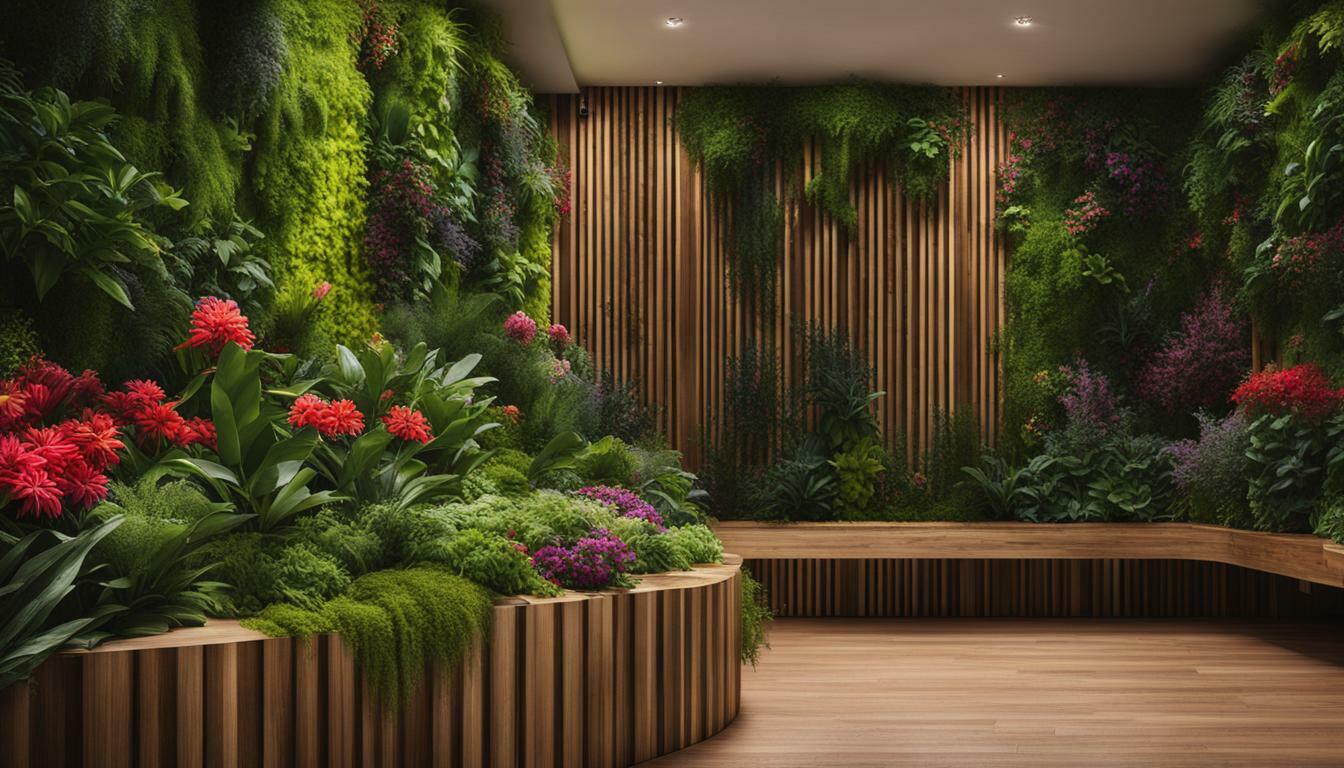Experience the beauty and functionality of a cedar vertical garden in your outdoor space today. Cedar vertical gardens are a stunning addition to any urban gardening setup, allowing you to maximize your limited space and create a lush, green oasis. The durable cedar walls not only provide a natural and rustic aesthetic but also offer long-lasting durability, making them perfect for urban environments.
Key Takeaways:
- Cedar vertical gardens are a great solution for those with limited outdoor space.
- The beauty and durability of cedar walls make them a popular choice for vertical gardening.
- Cedar vertical gardens allow you to grow a variety of plants, including vegetables, herbs, flowers, and fruit trees.
- Design considerations, such as the materials used for the frame, play a crucial role in creating a structurally sound vertical garden.
What Is Vertical Gardening?
Vertical gardening is a method of cultivating plants on a vertical surface or structure, allowing individuals with limited space to grow a variety of plants. This innovative gardening technique maximizes the use of vertical space, making it ideal for those who live in small apartments or homes or have limited outdoor areas. By utilizing walls or structures, vertical gardening offers a space-saving solution for urban dwellers who want to enjoy the benefits of gardening.
One of the advantages of vertical gardening is its versatility. It allows for the cultivation of various plants, including vegetables, herbs, flowers, and even fruit trees. This means that regardless of your preference, you can create a vertical garden that suits your needs and interests. Whether you’re a fan of colorful blooms or fresh herbs for cooking, a vertical garden can provide a diverse range of plant options.
| Benefits of Vertical Gardening |
|---|
| Maximizes limited space |
| Allows for a variety of plants |
| Utilizes vertical surfaces |
| Creates a visually appealing garden |
| Offers easy access to plants for care and harvesting |
| Can be an eco-friendly gardening option |
Vertical gardening can be achieved using a range of materials and designs. Some common options include using wooden frames, wire mesh, or plastic trellises to support the plants. Hanging planters or container gardens can also be incorporated into the design for growing vegetables or herbs.
With vertical gardening, you can transform any wall or structure into a living, green space. This method not only allows you to enjoy the beauty of plants but also provides the opportunity to grow your own produce, even in limited spaces.
Design Inspiration
“A vertical garden is like a living piece of artwork that adds natural beauty and a touch of green to your surroundings.” – Garden Enthusiast
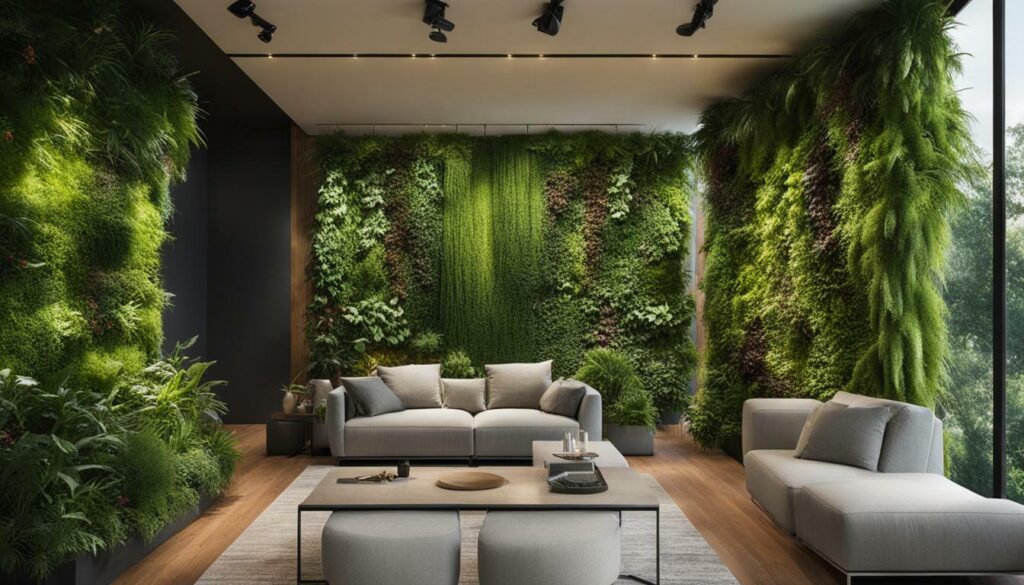
Whether you have a small balcony, patio, or just a bit of wall space, vertical gardening offers a creative and practical way to enhance your outdoor area. By incorporating vertical planters or structures, you can create a stunning visual display and bring nature closer to your everyday life. So why not embrace the beauty of vertical gardening and transform your limited space into a flourishing oasis?
Design Considerations
When planning and designing a cedar vertical garden, it is important to consider the materials for the frame and the overall design of the garden structure. The frame provides support for the plants and ensures that the wall or structure is sturdy and durable. Common materials used for the frame include wood, wire mesh, and plastic trellises.
Wood is a popular choice for cedar vertical gardens due to its natural beauty and durability. Cedar walls, in particular, are known for their resistance to rot, decay, and insect attacks, making them an excellent choice for outdoor gardening. Cedar also has a warm, rich color that adds aesthetic appeal to any garden design.
Wire mesh is another material that can be used for the frame of a cedar vertical garden. This option allows for a more open structure, which can be beneficial for plants that require good air circulation or climbers that need support for their growth. Additionally, wire mesh is lightweight and easy to work with, making it a convenient choice for DIY projects.
Plastic trellises are a versatile option for creating the frame of a cedar vertical garden. They come in various designs and sizes, allowing for flexibility in design. Plastic trellises are lightweight, durable, and resistant to weather conditions, making them suitable for outdoor use. They can be easily attached to walls or structures and provide ample support for plants to grow vertically.
Vertical Garden Design
When designing a cedar vertical garden, there are several factors to consider. The design should take into account the available space, the desired aesthetic, and the needs of the plants. It is important to create a layout that maximizes the use of the vertical space while providing enough room for each plant to grow.
One approach to vertical garden design is to create a pattern or arrangement with different plants. This can be done by grouping plants of similar heights or colors together, creating a visually appealing display. Another design option is to mix different types of plants to create a diverse and vibrant vertical garden. Consider incorporating climbing plants, trailing plants, and plants with different foliage textures to add visual interest.
It is also important to consider the maintenance and accessibility of the vertical garden. Ensure that there is enough space between plants to allow for easy watering, pruning, and harvesting. Consider the location of the garden and the availability of natural light to ensure that the plants receive adequate sunlight for growth.
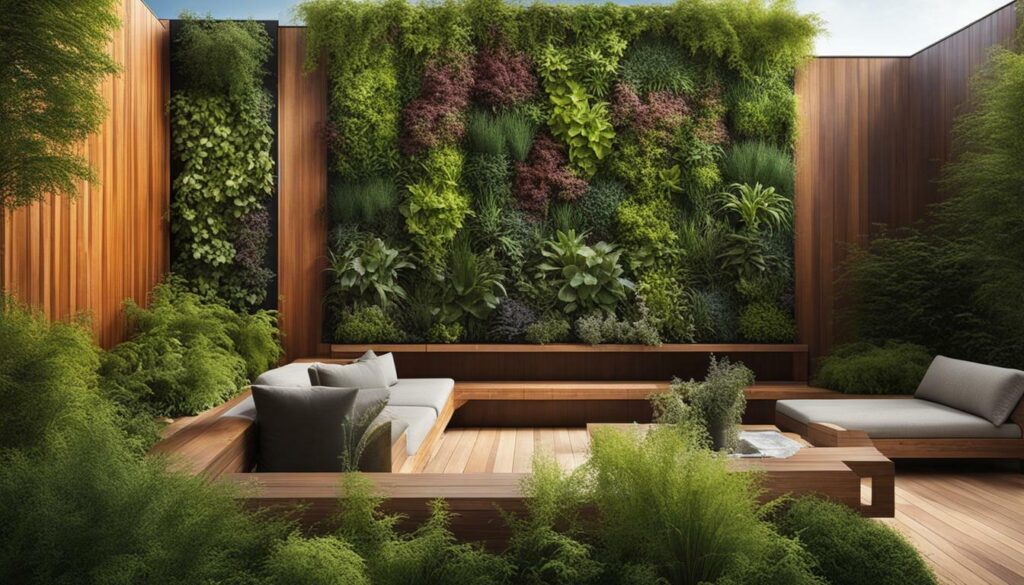
| Material | Advantages | Disadvantages |
|---|---|---|
| Wood | • Natural beauty • Durable and resistant to rot and decay • Provides insulation for plants | • Requires regular maintenance • Can be more expensive than other materials |
| Wire Mesh | • Lightweight and easy to work with • Allows for good air circulation • Provides support for climbers | • Not suitable for all plant types • May require additional support for heavy plants |
| Plastic Trellises | • Versatile design options • Lightweight and weather-resistant • Easy to attach to walls or structures | • May not provide as natural of a look as wood • Limited customization options |
Summary
When designing a cedar vertical garden, it is important to choose materials for the frame that provide support and durability. Wood, wire mesh, and plastic trellises are common options. Consider the advantages and disadvantages of each material to determine which will best suit your needs. Additionally, focus on creating a design that maximizes the use of vertical space, incorporates a variety of plants, and allows for easy maintenance and accessibility. With careful planning and a well-designed structure, you can create a beautiful and thriving cedar vertical garden in any outdoor space.
Preparation for Planting
Before planting in a cedar vertical garden, it is important to prepare the space by selecting the right soil, choosing suitable plants, and ensuring proper drainage and ventilation. These steps are essential for creating a thriving and healthy vertical garden.
The first step in preparation is soil selection. Choosing the right soil is crucial for the success of your plants. A well-draining soil that retains moisture is ideal for vertical gardens. Consider using a lightweight and nutrient-rich potting mix that provides good drainage.
Next, carefully select the plants that will thrive in your vertical garden. Consider the amount of sunlight your garden receives and choose plants accordingly. Some popular choices for vertical gardens include herbs, lettuce, strawberries, and flowering vines. Research the specific requirements of each plant to ensure they are suitable for vertical growth.
Once you have selected your plants, it’s time to choose the containers for your vertical garden. Opt for containers that are appropriate for the size and weight of your plants. Hanging baskets, pocket planters, or sturdy containers that can be attached to the vertical structure are all great options. Make sure the containers have proper drainage holes to prevent waterlogging.
In addition to selecting the right soil, plants, and containers, proper drainage and ventilation are essential for a healthy vertical garden. Adequate drainage prevents water buildup, which can lead to root rot and other plant diseases. Ensure that your containers have drainage holes and place a layer of gravel or pebbles at the bottom to facilitate drainage.
Ventilation is important to prevent the growth of mold and mildew in your vertical garden. Choose a location that allows for proper air circulation or consider adding small fans to improve airflow. This will help keep your plants healthy and reduce the risk of pests and diseases.
Table 1: Quick Tips for Preparation
| Step | Tips |
|---|---|
| Soil Selection | Choose a well-draining potting mix that retains moisture. |
| Plant Selection | Consider the amount of sunlight your garden receives and choose plants accordingly. |
| Container Selection | Choose containers appropriate for the size and weight of your plants, ensuring proper drainage. |
| Drainage | Ensure containers have drainage holes and use gravel or pebbles at the bottom to facilitate drainage. |
| Ventilation | Choose a location with proper air circulation or consider adding small fans to improve airflow. |
By following these steps, you can create an optimal environment for your plants and set the foundation for a successful cedar vertical garden.
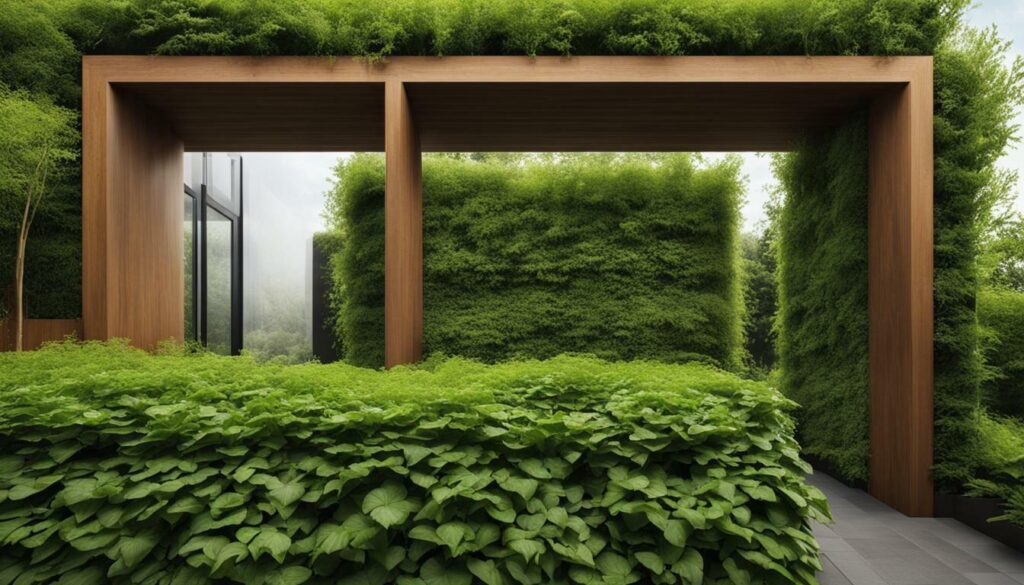
“The first step in preparation is soil selection. Choosing the right soil is crucial for the success of your plants. A well-draining soil that retains moisture is ideal for vertical gardens.”
Planting and Maintenance
When planting and maintaining a cedar vertical garden, it is essential to choose plants that are well-suited to the environment and regularly monitor their needs for sunlight, water, and support. Selecting the right plants is crucial to ensure their successful growth and longevity on the vertical structure. Consider plants that can thrive in the specific conditions provided by the wall or structure, such as sun exposure and humidity levels.Here are some key factors to consider when selecting plants for your cedar vertical garden:- Sun Exposure: Determine whether your wall or structure receives full sun, partial shade, or full shade. Different plants have varying sunlight requirements, so choose plants that match the available light conditions.
- Watering Needs: Some plants require more frequent watering, while others prefer drier soil. Take into account the watering needs of your chosen plants and ensure that your vertical garden provides adequate irrigation.
- Plant Support: As your plants grow, they may need additional support to prevent them from sagging or falling. Consider using trellises, stakes, or mesh netting to provide support and maintain the aesthetic appeal of your vertical garden.
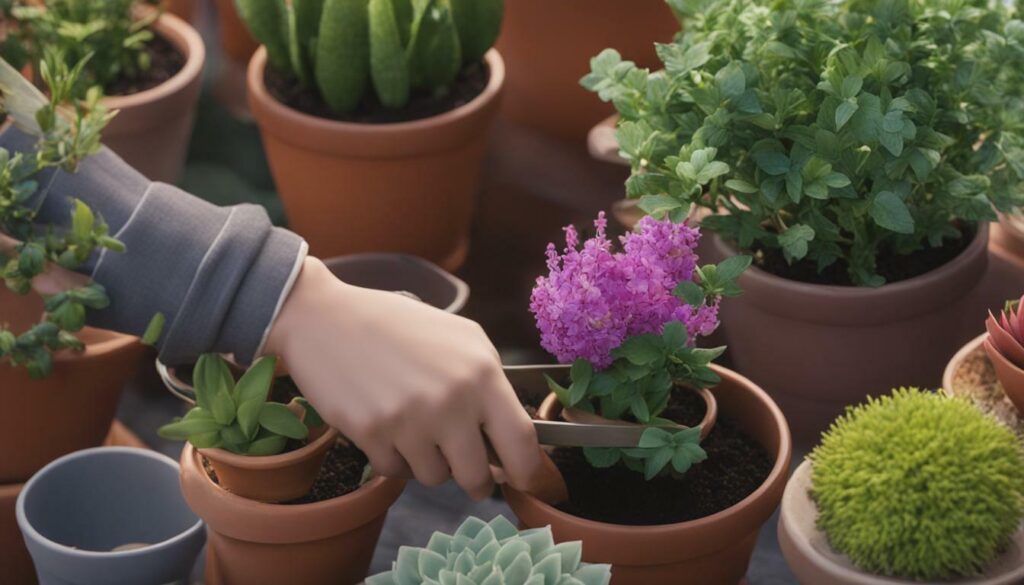 In summary, planting and maintaining a cedar vertical garden requires careful selection of plants that can thrive in the specific environment of the wall or structure. Consider factors such as sun exposure, watering needs, and plant support to ensure the successful growth and maintenance of your vertical garden. Regular monitoring and maintenance will help you create a beautiful and flourishing green space in even the smallest of outdoor areas.
In summary, planting and maintaining a cedar vertical garden requires careful selection of plants that can thrive in the specific environment of the wall or structure. Consider factors such as sun exposure, watering needs, and plant support to ensure the successful growth and maintenance of your vertical garden. Regular monitoring and maintenance will help you create a beautiful and flourishing green space in even the smallest of outdoor areas.| Plant Selection Tips |
|---|
| Choose plants that are suitable for the available sunlight in your vertical garden. |
| Consider the watering needs of your chosen plants and ensure proper irrigation. |
| Provide support for your plants as they grow to prevent sagging or falling. |
| Regularly check and maintain your vertical garden to ensure healthy growth and appearance. |
Vertical Gardening as a DIY Project
Vertical gardening can be an enjoyable and rewarding DIY project, allowing individuals to create beautiful green art with a little creativity and basic plant care knowledge. Whether you have limited outdoor space or simply want to add a unique element to your garden, vertical gardening provides the perfect solution. With the right supplies and a touch of imagination, you can transform a blank wall or structure into a vibrant living wall that brings life and beauty to any space.
When embarking on a vertical gardening project, it’s important to consider the design and materials. There are endless possibilities when it comes to designing your vertical garden, from simple hanging planters to intricate trellis systems. You can choose to use materials like wood, wire mesh, or plastic trellises, depending on your personal style and the structural requirements. It’s all about finding the right balance of functionality and aesthetics to create a visually stunning vertical garden.
Preparation is key for successful vertical gardening. Before planting, make sure you have the right soil and containers for your plants. Consider the specific needs of the plants you want to grow, such as sun exposure and watering requirements, to ensure they thrive in their vertical setting. Adequate drainage and ventilation are also essential for the health and longevity of your vertical garden. Taking the time to prepare properly will set the stage for a flourishing and vibrant display of greenery on your wall.
Once your vertical garden is planted, regular maintenance is crucial for its success. This includes monitoring the plants’ growth and providing support as needed. Be mindful of sun exposure and watering, as vertical gardens can dry out more quickly than traditional gardens. Regularly check your plants for signs of pests or disease, and take appropriate action to keep your vertical garden in optimal condition. With proper care, your DIY vertical garden can become a stunning centerpiece of your outdoor space.
Table 1: Common Materials for Vertical Garden Design
| Material | Advantages | Disadvantages |
|---|---|---|
| Wood | Natural aesthetic, customizable | May require regular maintenance |
| Wire Mesh | Allows for intricate designs, lightweight | May not be as durable as other materials |
| Plastic Trellises | Low maintenance, affordable | Not as visually appealing as other options |
As you embark on your DIY vertical gardening journey, remember to let your creativity shine. Experiment with different plant combinations and arrangements to create a visually stunning display. Whether you choose to plant colorful flowers, fresh herbs, or even cascading vines, vertical gardening allows you to showcase your personal style and create a unique piece of green art.
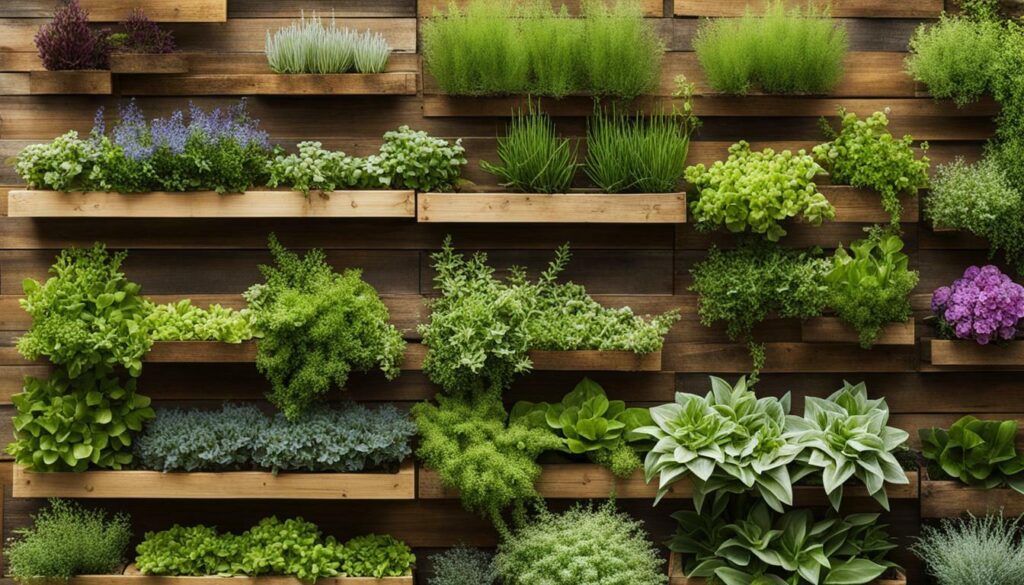
Conclusion
In conclusion, a cedar vertical garden is a perfect solution for those with limited space, offering increased yields, aesthetic beauty, and the opportunity to enjoy the benefits of gardening in any outdoor area. Vertical gardening allows individuals to maximize the use of their limited space by growing a variety of plants, including vegetables, herbs, flowers, and fruit trees, in a much smaller area than a traditional garden.
With a cedar vertical garden, you can create a stunning outdoor space that not only provides fresh produce and herbs but also adds a touch of natural beauty to your surroundings. The natural beauty of Real Cedar walls enhances the overall aesthetic of your garden, creating a visually appealing and harmonious environment.
Not only is a cedar vertical garden visually appealing, but it also offers practical benefits. By growing plants vertically, you can increase your yields, as the plants receive more sunlight and air circulation, resulting in healthier and more productive growth. This is especially important for those with limited outdoor space who still want to grow a bountiful garden.
Additionally, a cedar vertical garden is a sustainable choice. Real Cedar is naturally resistant to rot, decay, and insect attacks, making it a durable and long-lasting option for your garden. It is also sourced from sustainably managed forests, ensuring that your gardening endeavors have minimal impact on the environment.
So, if you’re looking to maximize your gardening potential in limited space, enhance the beauty of your outdoor area, and enjoy increased yields, consider incorporating a cedar vertical garden into your space. With its versatility, sustainability, and timeless beauty, Real Cedar is the perfect material to bring your vertical garden to life.
How Does a Cedar Vertical Garden Compare to a Hummingbird Vertical Garden in Terms of Beauty and Maintenance?
When it comes to beauty and maintenance, a cedar vertical garden may offer a more rustic and natural appeal compared to a hummingbird vertical garden. However, the vibrant colors and intricate designs of a hummingbird vertical garden USA can be truly captivating, making it a stunning and low-maintenance option for any space.
FAQ
Q: What is vertical gardening?
A: Vertical gardening is the practice of growing plants on a vertical surface or structure, either indoors or outdoors. It allows people to cultivate a variety of plants in any given space and is ideal for those with limited outdoor space or small apartments.
Q: What are the design considerations for a cedar vertical garden?
A: When designing a cedar vertical garden, you have the flexibility to use a variety of materials for the frame, including wood, wire mesh, and plastic trellises. It’s important to ensure that the wall or structure is structurally sound and can support the weight of the plants.
Q: How do I prepare a cedar vertical garden for planting?
A: To prepare a cedar vertical garden for planting, you need to choose the right soil, select the appropriate plant types, decide on the containers, and ensure proper drainage and ventilation. It’s also important to make sure the wall or structure can support the weight of the plants and their water needs.
Q: What should I consider when planting and maintaining a cedar vertical garden?
A: When planting a cedar vertical garden, it’s important to choose plants that are suited for the wall or structure and can handle the environment they will be placed in, considering factors like sun exposure and watering needs. Regularly check on the plants to ensure the frame adequately supports them and that they are receiving enough water and nutrients from the soil.
Q: Can I create a cedar vertical garden as a DIY project?
A: Absolutely! Cedar vertical gardening is an excellent DIY project that is relatively easy to assemble and manage with the right supplies. You don’t need a large space or a lot of money to create a beautiful vertical garden. All you need is some creativity and basic knowledge about plant care.
Q: What are the advantages of a cedar vertical garden?
A: Cedar vertical gardening allows you to maximize your gardening potential in space-constrained areas. It offers increased yields, aesthetic beauty, and the opportunity to create a green art piece on your walls. Additionally, cedar walls are durable and suitable for urban gardening.

